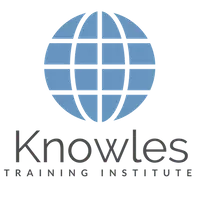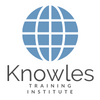Change Management Lunch Talk In Singapore
Step into the realm of organizational transformation with our exclusive Change Management Lunch Talk in Singapore. In the fast-paced world of business, the ability to navigate change effectively is paramount for success. Join us for an enlightening session where we delve into the intricacies of change management, exploring strategies and insights to lead teams through transitions with confidence and agility. Against the backdrop of Singapore’s dynamic business landscape, our talk offers invaluable guidance and practical tools to empower leaders and professionals to embrace change as an opportunity for growth and innovation.
Embrace the power of change and unlock the secrets to organizational resilience at our Change Management Lunch Talk. Gain insights from industry experts and thought leaders as we explore proven methodologies and best practices for driving successful change initiatives. Join us in Singapore’s vibrant business community and equip yourself with the knowledge and strategies needed to thrive in an era of constant evolution.
Talk Objectives:
- Define Change Management:
Clarify the concept of change management and its significance in navigating transitions within organisations, establishing a foundational understanding for participants. - Explore Change Models:
Introduce participants to various change management models and frameworks, such as Kotter’s 8-Step Process or ADKAR, providing them with tools to effectively plan and execute change initiatives. - Understand Resistance to Change:
Analyse the factors contributing to resistance to change within organisations and explore strategies to address and mitigate resistance, fostering a more receptive environment for change. - Communicate Effectively:
Highlight the importance of clear and transparent communication throughout the change process, equipping participants with techniques to engage stakeholders, manage expectations, and build trust. - Develop Change Leadership Skills:
Cultivate change leadership capabilities among participants, including vision-setting, influencing, and stakeholder management, empowering them to lead change initiatives with confidence and effectiveness. - Manage Organisational Culture:
Examine the role of organisational culture in shaping change outcomes and explore approaches to align culture with change objectives, ensuring cultural readiness and sustainability. - Build Change Readiness:
Assess and enhance organisational and individual readiness for change through readiness assessments, skill-building workshops, and change readiness plans, fostering preparedness and resilience. - Implement Change Strategies:
Provide participants with practical tools and strategies for implementing change, including project management techniques, change communication plans, and monitoring and evaluation frameworks. - Foster Employee Engagement:
Emphasise the importance of engaging employees throughout the change process, involving them in decision-making, soliciting feedback, and recognising and rewarding contributions, fostering ownership and commitment. - Evaluate Change Success:
Establish metrics and mechanisms for evaluating the success of change initiatives, measuring progress against objectives, identifying lessons learned, and iterating on strategies for continuous improvement.
Join us in mastering the art of business writing and unlock the key to effective communication in the corporate world. Reserve your spot at our Business Writing Lunch Talk in Singapore and take your professional skills to the next level. Don’t miss this opportunity to learn from industry experts and connect with fellow professionals. Sign up now and embark on a journey towards excellence in business communication.
Seize the chance to enhance your writing proficiency, influence stakeholders, and propel your career forward. Our interactive session promises invaluable insights and practical tips that will transform your approach to business writing. Register today and invest in your professional development. Your success story begins with effective communication.
More Information:
Duration: 60 minutes
Fees: SGD 1299.97 SGD 1334.96
For more information please contact us at: contact@knowlesti.sg or please call: +65 6714 6663
If you would like to register for this talk, fill out the registration form below.


